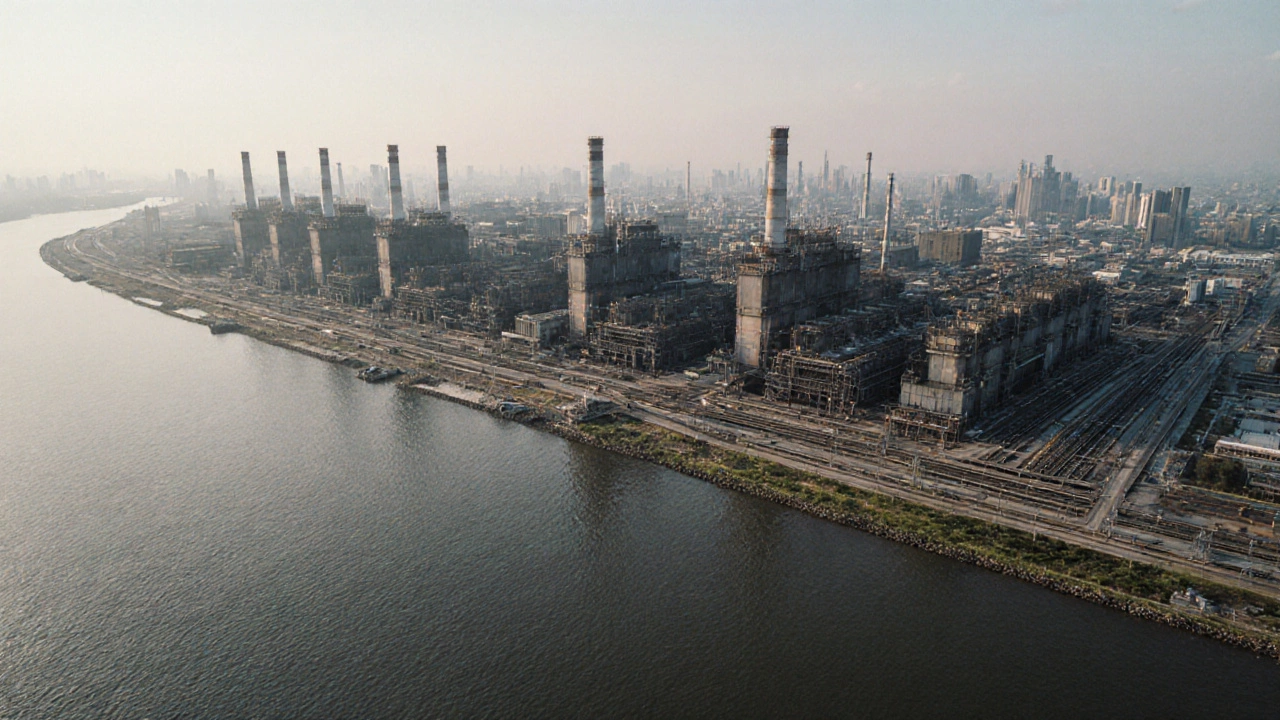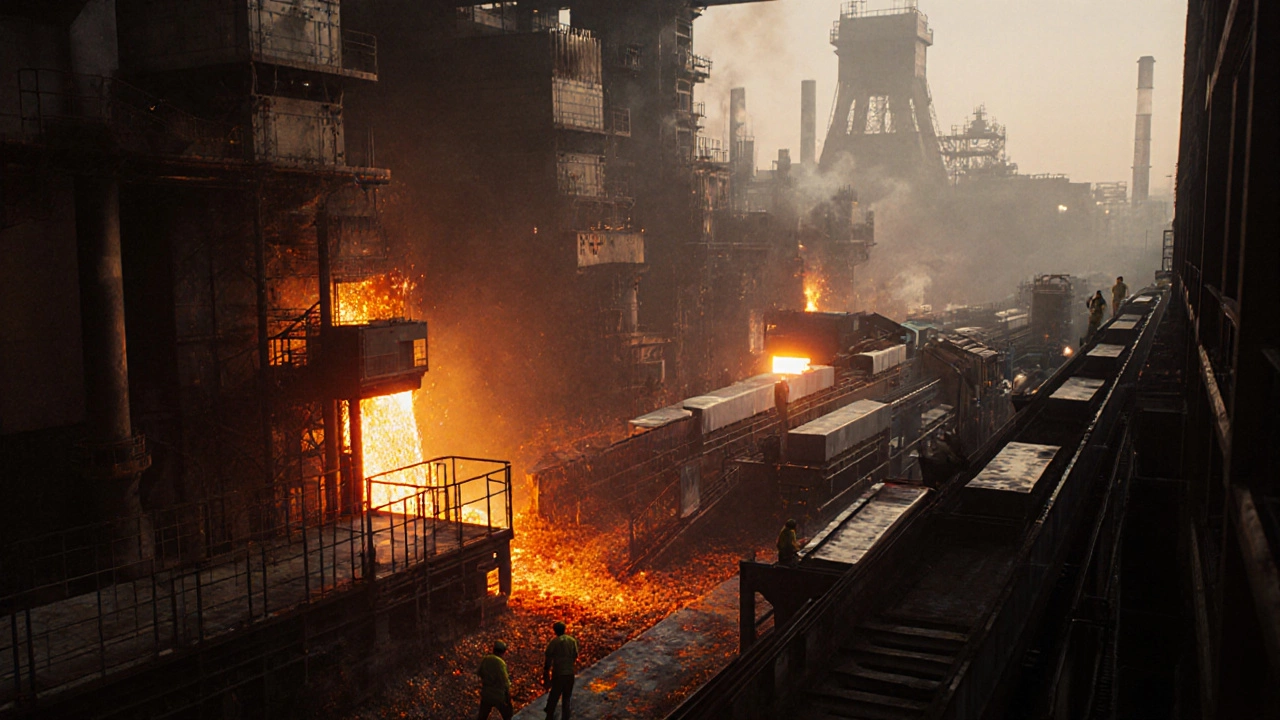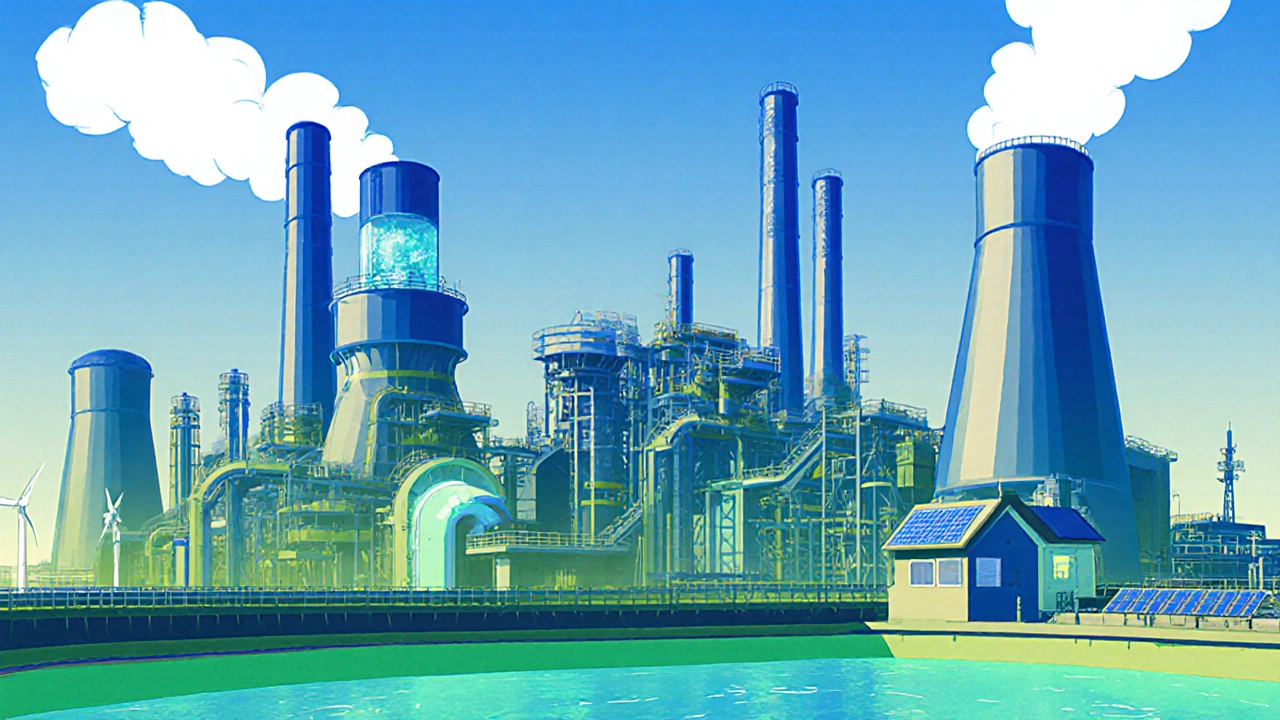 Oct, 8 2025
Oct, 8 2025
World's Largest Steel Plant Finder
Find the World's Largest Steel Plant
Enter a country name to see if it hosts the world's largest steel plant or compare capacities.
| Plant | Country | Capacity (Mt/year) |
|---|---|---|
| Shanghai Baosteel Integrated Steel Mill | China | 22 |
| POSCO Gwangyang Plant | South Korea | 14.5 |
| ArcelorMittal South Africa Plant | South Africa | 12.5 |
| Tata Steel Jamshedpur Plant | India | 11.0 |
Ever wondered which single site cranks out the most steel on the planet? The answer points you straight to a sprawling complex on the outskirts of Shanghai, China. That facility isn’t just massive in size - it leads the world in crude‑steel capacity, employs tens of thousands, and showcases the most integrated production line you’ll find anywhere.
Introducing the World’s Largest Steel Plant
Shanghai Baosteel Integrated Steel Mill is a fully integrated steelmaking complex that combines raw‑material handling, blast furnace reduction, basic oxygen conversion, and continuous casting under one roof. Operated by Baowu Steel Group, the plant boasts an annual crude steel capacity of roughly 22million metric tonnes, making it the highest‑output single site on record as of 2025.
Where Exactly Is It Located?
The mill sits in the Baoshan District of Shanghai, a coastal enclave in eastern China. Its waterfront location grants direct access to bulk‑carrier terminals, rail links, and a dense network of suppliers. The site spans over 25 square kilometres, a footprint large enough to accommodate more than 30 blast furnaces, several electric‑arc furnaces, and an extensive downstream finishing complex.
Why It Holds the Top Spot
Three factors push Shanghai Baosteel ahead of every competitor:
- Integration depth: From iron ore sintering to hot‑rolled coil, every step happens on‑site, cutting transport costs and boosting yield.
- Modern furnace mix: While the plant still runs over 30 blast furnaces (BF) for primary reduction, it added more than 20 high‑efficiency electric‑arc furnaces (EAF) to recycle scrap, giving it flexibility during raw‑material price swings.
- Scale of ancillary units: The complex includes a 4‑million‑tonne coke plant, a 3‑million‑tonne sinter plant, and a 2‑million‑tonne continuous‑casting line, all feeding the main steelmaking stream.

Key Specs at a Glance
| Plant | Country | City / Region | Annual Capacity (Mt) | Primary Production Method |
|---|---|---|---|---|
| Shanghai Baosteel Integrated Steel Mill | China | Baoshan, Shanghai | 22 | BF + EAF |
| POSCO Gwangyang Plant | South Korea | Gwangyang | 14.5 | BF |
| ArcelorMittal South Africa Plant | South Africa | Natref (Middelburg) | 12.5 | BF |
| Tata Steel Jamshedpur Plant | India | Jamshedpur | 11.0 | BF + EAF |
Who Runs the Mill?
Baowu Steel Group, formed from a 2018 merger between Baosteel and Wuhan Iron and Steel, is now the world’s largest steel producer by revenue. The group’s board oversees the Shanghai complex, investing roughly $6billion in recent upgrades, including low‑NOx burners and carbon‑capture pilots. Their stewardship has turned the plant into a benchmark for both productivity and sustainability.
Workforce and Community Impact
At peak operation the mill employs about 45,000 workers, ranging from furnace operators to high‑tech engineers. Baowu runs a vocational academy on‑site, training 3,200 apprentices each year. The plant also contributes over ¥3billion in local taxes, funding Shanghai’s public‑transport expansion and school upgrades.
Environmental Measures - How a Giant Turns Green
Massive steelmaking has a reputation for heavy emissions, but Shanghai Baosteel is taking steps to curb its footprint:
- Installation of a carbon‑capture unit that can sequester up to 1Mt of CO₂ annually.
- Switch to top‑gas recovery systems that recycle blast furnace off‑gases for power generation, cutting coal use by 15%.
- Deployment of a closed‑loop water‑recycling plant that reuses 85% of process water.
These initiatives have lowered the plant’s specific CO₂ emissions to about 1.3kg per tonne of steel, a figure that rivals many European producers.

Comparing the Competition
While Shanghai Baosteel leads in raw capacity, other sites excel in different ways. POSCO’s Gwangyang plant, for instance, is famed for its advanced hot‑rolling technology and lower energy intensity. ArcelorMittal’s South African operation benefits from abundant iron ore reserves, keeping raw‑material costs low. Tata Steel in Jamshedpur has a strong focus on specialty steel grades for the automotive sector.
What the Future Holds for the Shanghai Complex
Baowu has laid out a roadmap to push the plant’s capacity toward 25Mt by 2030, mainly by expanding the EAF corridor and adding more scrap‑recycling capacity. Parallel to that, a pilot hydrogen‑direct‑reduction unit is slated for 2027, aiming to replace a portion of coal‑based reduction with green hydrogen. If those plans succeed, Shanghai Baosteel could cement its lead not just in size, but also in low‑carbon steelmaking.
Quick Takeaways
- The biggest steel plant in the world is Shanghai Baosteel Integrated Steel Mill, located in Baoshan, Shanghai, China.
- It produces roughly 22million tonnes of crude steel each year, dwarfing the next largest sites.
- Its integrated layout, blend of blast‑furnace and electric‑arc technology, and massive ancillary units give it a decisive edge.
- Baowu’s ongoing upgrades aim to boost capacity and cut emissions, positioning the plant for a greener future.
Frequently Asked Questions
What is the annual crude‑steel capacity of Shanghai Baosteel?
The plant can produce about 22million metric tonnes of crude steel per year, making it the largest single‑site capacity worldwide.
Where exactly is the mill located?
It’s situated in the Baoshan District of Shanghai, on the eastern coast of China, adjacent to major port facilities.
How many workers are employed at the complex?
At full operating speed the site employs roughly 45,000 people, including production staff, engineers, and support personnel.
What technologies are used to reduce emissions?
Key measures include a carbon‑capture unit, top‑gas recovery for power, and an 85% water‑recycling system. Baowu also plans a hydrogen‑based direct‑reduction pilot by 2027.
How does Shanghai Baosteel compare to POSCO’s Gwangyang plant?
Baosteel leads in sheer capacity (22Mt vs. 14.5Mt) and integration, while POSCO excels in energy efficiency and advanced hot‑rolling processes.